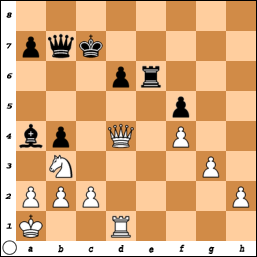What many players fail to realize is that the values of the pieces are not fixed. Just because a pawn is worth one point at the start of the game does not mean that its value can't increase or decrease as the game progresses. This is true for all the chess pieces and is the essence of positional chess. As opposed to the tactician who knows only how to win by having more quantity of pieces, the positional player wins by having better quality of pieces, even if it means sacrificing material in order to accomplish this goal.
Think of opening a savings account at the bank with $100. A year later, you want your initial deposit to have grown in value, let's say to $105; and you definitely don't want your money to have decreased to $95! All of the positional maneuvering in chess, which beginners don't understand, is done for the purpose of obtaining better quality or, in other words, to grow the value of the chess pieces from their initial values at the start of the game.
To illustrate how this is accomplished, at the demonstration board, I showed a recent game of mine as White against a player with a USCF 2100 rating. My strategy from move one was simple: to promote my e-pawn to the queening square, by the indirect route of e4 to d5 and eventually to d8, at which point my opponent resigned.
There were several obstacles in my path. First, I needed to weaken the d5 square. Next, I placed my knight on d5, where it was too strong. When my opponent exchanged his knight for mine, I recaptured with the e-pawn. Now, his pawn on d6 was in the way. I removed it by a pawn fork at c5, forcing Black to capture with his d6 pawn, thereby opening a path for my newly created passed pawn on d5. Then, I used a discovered check and the threat of a knight fork to advance the passer to the d7 square. Needless to say, my opponent blockaded at d8 with one of his rooks. Finally, how to divert the enemy rook from its blockading square? Why not a mating attack! To prevent checkmate, Black had to move his rook from d8, enabling my d-pawn to queen and win the game.
In this illustrative game, I used tactics (such as forks and discovered check) not to gain a material advantage, but to carry out my simple strategy of queening the e-pawn, which moved to e4 to open the game. Simple chess!
Before the class ended, I gave the solution to the homework assignment, involving three different tactical weapons: a double attack, followed by a fork, made possible by a pin.








































